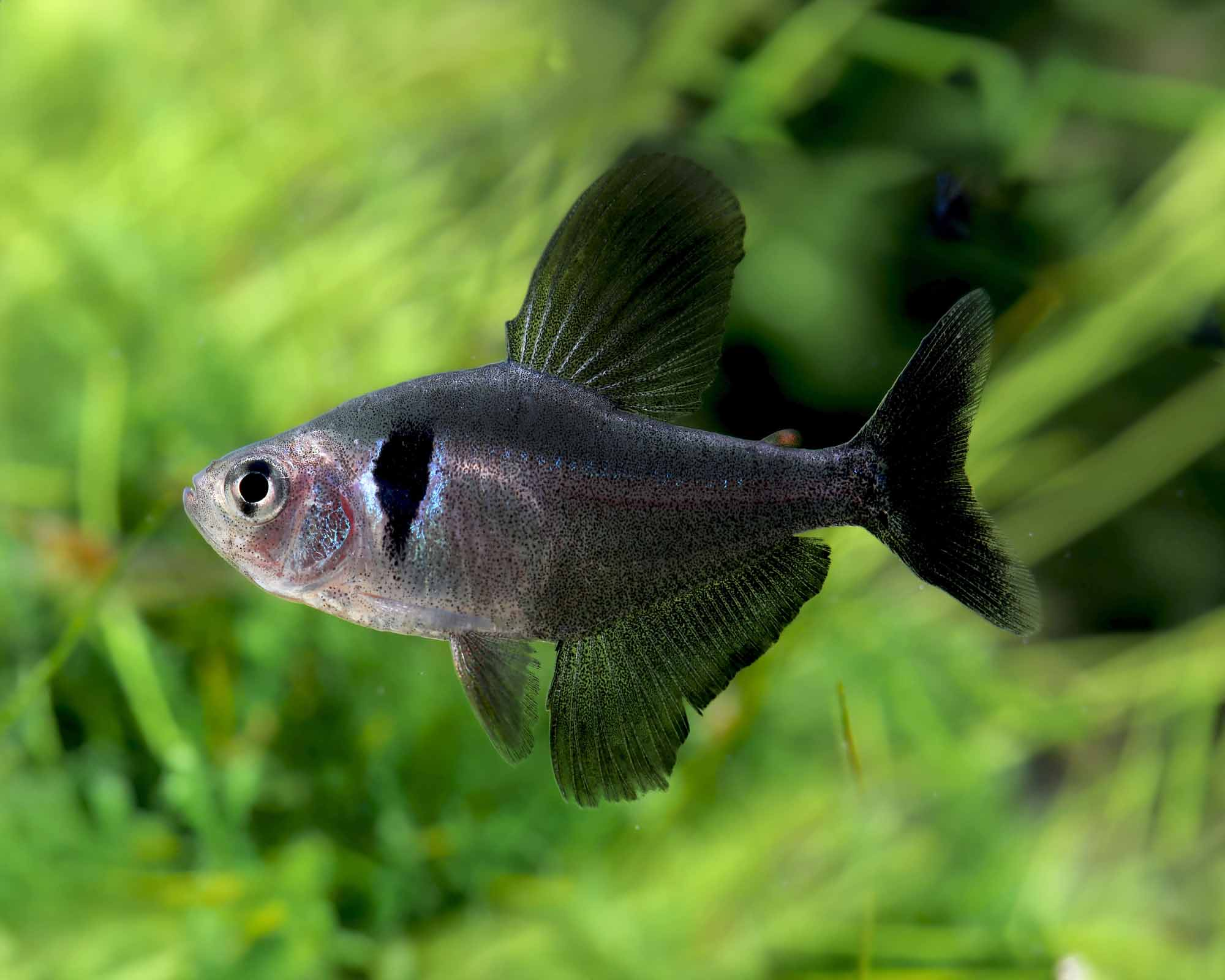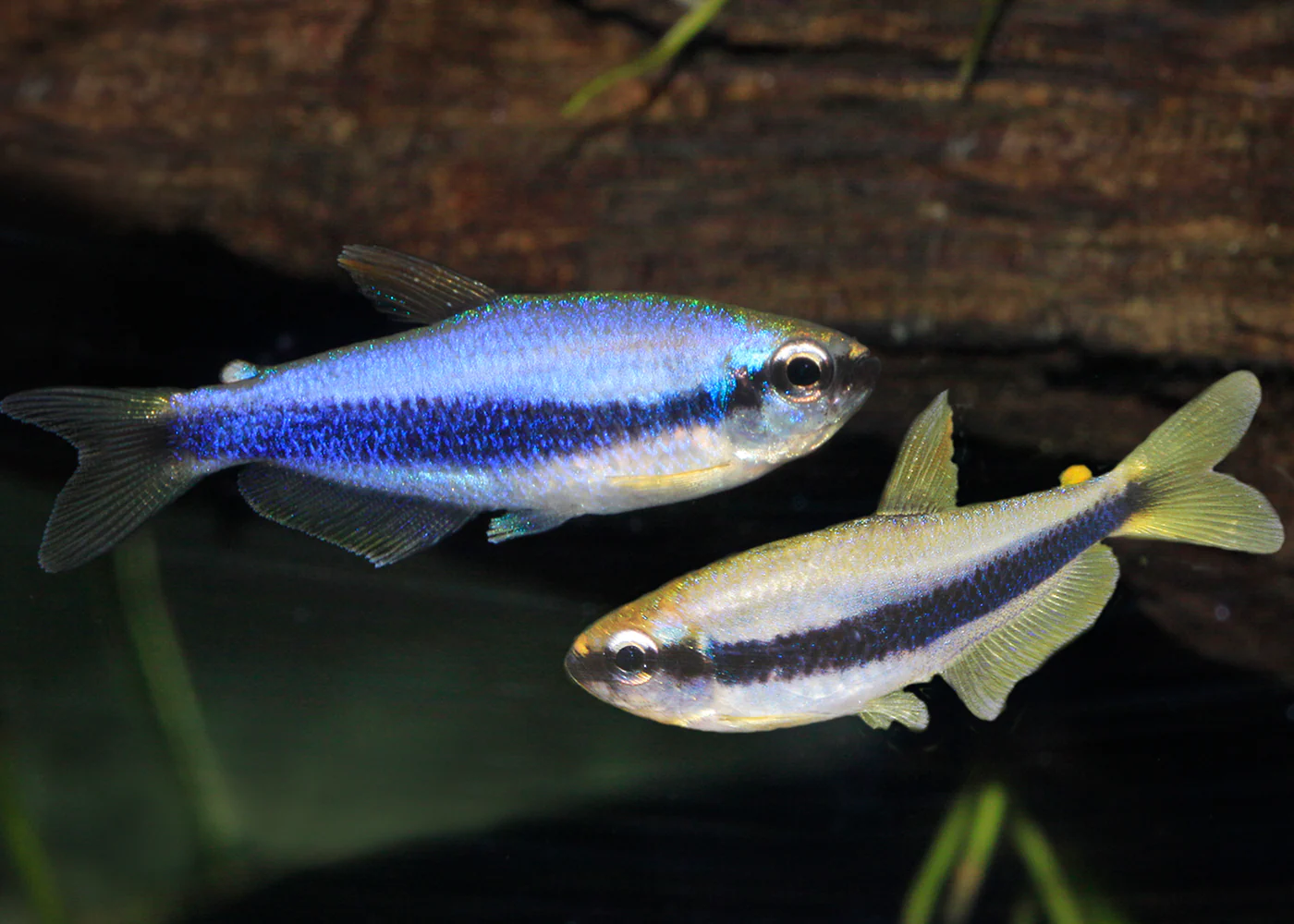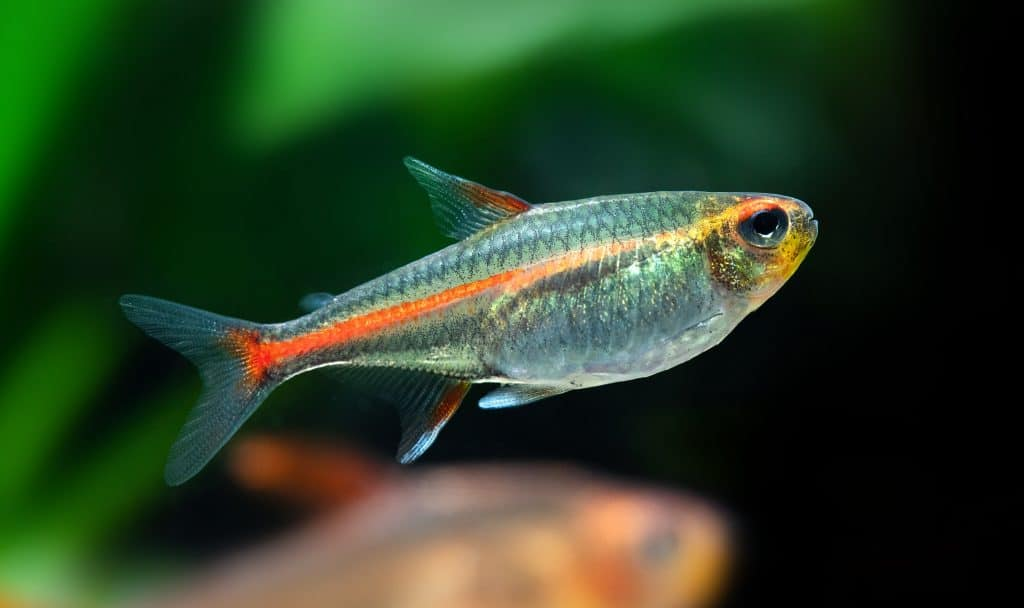The Firemouth Cichlid is a gregarious species known from slow-moving or still lowland waters of the lower and middle sections of rivers, canals, ditches, lagoons, and rocky ponds. Here the substrates are muddy or sandy and strewn with smooth rocks, submerged branches, leaf litter, and these waterways are packed with dense aquatic vegetation along the shorelines. These beautiful cichlids are a very popular choice for the home aquarium, on account of their relatively easy going nature (unless spawning), medium adult size, and their dazzling bright colours. As Firemouths like to sift the substrate in search of food items, it is essential that they are maintained in an aquarium with a fine, soft sand substrate. Food morsels will be eaten, and any inedible material expelled through the gills, so it is important not to use sharp sand. Ample cover should be provided in the form of driftwood, smooth rockwork, and robust aquatic plants tied to the decor, leaving an open swimming space along the front of the aquarium. Clean, unused, ceramic flower pots are also readily accepted as caves, although these may detract a little from the natural aquascape. Leaf litter (e.g. dried Indian almond leaves) can be provided to create a more realistic environment, but do remember to leave a decent space in the sand for these cichlids to sift through. Good water quality should be provided at all times to ensure the continued wellbeing of these beautiful fish ““ a high nitrate level makes them more prone to health problems, and is so easily avoided. The aquarium really should be at least 4ft long for juveniles and preferably 5-6ft long for a group of adults, as these fish are rather territorial when breeding. Although a pair will reproduce in smaller aquaria, you will be able to observe your Firemouth Cichlids behaving much more naturally if there is more space available – this being somewhat suppressed in smaller aquaria. Although territorial when breeding, these cichlids are not aggressive fighters the rest of the time. Instead they will often settle minor disputes amongst themselves through sheer bluff and bluster – flaring their gills (which are complete with eye spots) to make themselves appear larger and more intimidating when viewed head-on – and they do not follow up these threats to the same degree as some other cichlids might. In scuffles between other more boisterous cichlids, such as many of the assertive types from Central America, the Firemouths could end up coming out of it quite badly; so for this reason it is best to keep them in a species only set-up or else with other relatively placid species such as Severums (Heros severus) or Blue Acaras (Aequidens pulcher), for example. Do not house them with large, aggressive species, as Firemouths are essentially a shy, peaceful fish outside of breeding time. Likewise, any diminutive, slow-moving tankmates should be avoided. Many aquarists have a good deal of success keeping robust livebearers such as swordtails or goodeids along with their Firemouth Cichlids in a specious environment, these acting as dither fish and encouraging the cichlids out into the open. Some of the small to medium Central American characins also make good tankmates, and if you are not fussy about creating a mix of fish from different continents, rainbowfish are another good option for shoaling mid-top water fish. Armoured suckermouth catfish should be quite safe for the lower areas of the tank, but avoid Corydoras as they are too easy a target should the Firemouths commence spawning. This species has been introduced to Colombia, Puerto Rico, Singapore, and the USA (including Hawaii) and has become established in these countries.
Feeding
Omnivorous, but be careful not to feed too much protein as they can be prone to digestive issues. They will enjoy a variety of frozen foods such as vitamin-enriched brineshrimp, white mosquito larvae, bloodworm (sparingly), Mysis, daphnia, and various dried foods such as flake, green flake, crisps, slow sinking granules, cichlid pellets, and crushed algae wafers. Do also include some fresh vegetable matter in the diet.




Reviews
There are no reviews yet.